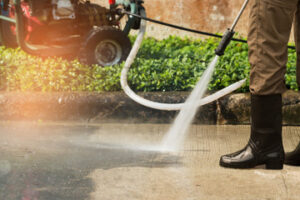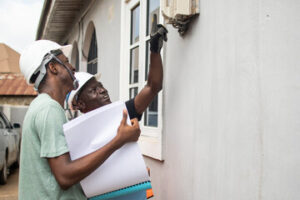Your garage door will be used often, but the way you use it will influence how long it lasts. With proper care, you can expect your new door to last for 50 – 75 years.

A well-maintained garage door requires lubrication of moving parts every six months and visual inspections to check for damage or rust monthly. Some openers also have vacation mode to ensure the garage door remains closed while you’re away. Learn More by reading the article below.
Overhead-operating doors are a popular choice for commercial properties, including warehouses and self-storage facilities. These doors provide a high level of security, energy efficiency, and durability. In addition to these benefits, they can also help reduce operating costs and improve the look of your property. However, if you’re thinking about installing an overhead door, there are some things to consider before making the investment.
In addition to these features, overhead doors can be customized to suit the specific needs of your facility. For example, you can choose from a wide range of colors and finishes to complement your building’s design. Also, overhead doors can be fitted with alarms and other devices to prevent unauthorized access. In addition, you can select from a range of opening options, including tilt-up canopy doors, side-hinged doors, and sectional doors.
Another advantage of overhead doors is their ease of maintenance. They can be inspected and maintained regularly to ensure that they are functioning properly. These inspections should include lubrication, monitoring of electrical connexions, and sensor alignment. You can also choose from a variety of motorized systems that can open and close the door with the push of a button. These doors can be operated remotely, which makes them ideal for facilities that require frequent access to vehicles and equipment.
An overhead door can also protect valuables from harsh weather and theft. These doors are built from durable materials and have advanced locking techniques to discourage tampering. These features can make a significant difference in the safety and security of your home or business.
Overhead-operating garage doors can be installed in both residential and commercial properties. In residential applications, these doors are often used for vehicle storage and as an entryway into the house. They can also be equipped with a garage door opener for added convenience.
Whether you’re looking for a simple, cost-effective way to upgrade your property’s appearance or want to increase its functionality, an overhead door can be the perfect solution. In addition to adding curb appeal, these doors can increase the value of your property and make it easier to sell in the future.
Slide to the side doors
Lift and slide doors use simple engineering to create a smooth operating system that fits tightly into the frame of your garage door opening. When opened, the rollers move down from inside the frame and the door pulls up against the threshold creating a tight seal that keeps rain, debris, insects, dust and dirt out of the garage while maintaining ventilation.
They are also the ideal choice if security is top priority, as they have robust locking mechanisms that make it difficult to break into your home. Their tight seal also helps reduce noise from outside. They are perfect for areas with extreme weather conditions, as they help to keep the elements at bay and protect against harsh wind and rain.
Steel is not a natural insulator, but high-quality steel doors that are layered with polyurethane insulation are available to improve energy efficiency and regulate garage temperatures. Steel doors are prone to dings and dents, so they should be kept away from cars or other objects that might hit them.
The doors are manufactured in panels that can either stack open or recess into a wall pocket, giving you the flexibility to fit your space. They’re great for homes that encourage indoor-outdoor living, and they are available in a wide range of styles and custom configurations to suit any space.
These doors can be customized with window, panel and decorative hardware options, as well as a wide variety of finishes including Glacier White to Ultra-Grain Walnut. They also match a variety of different home styles, including Craftsman and bungalow homes, Mission Revival houses, Tudor houses and ranch-style homes.
Because they roll to one side, they consume less interior wall space than other types of garage doors and leave the majority of the garage opening unobstructed. They are the ideal option if you want to convert your garage into a living area, workshop or home gym. They are also a good fit for garages that need to be secure from the elements, as they have quality rubber seals on all four sides to keep leaves, dust and dirt out.
Side-hinged doors
Side-hinged doors are a popular choice for garages that serve as an additional living space. The doors allow homeowners to easily access their lawnmowers and tools without having to open the entire garage. The doors can also be locked in place to provide additional security. They are available in a variety of colours and designs. The doors are made to measure, so they can fit any type of garage door. Moreover, homeowners can choose doors that match the design of their front doors to create a uniform appearance.
These doors offer a number of advantages over traditional garage doors, including easy pedestrian access and superior privacy. They are typically insulated to keep sound and temperature from bleeding through. They also come with locking systems that are UK-tested and certified. However, they can be costly to replace and require regular maintenance to ensure that they function properly.
If you’re thinking of installing a side-hinged garage door, it’s important to assess your home’s available space and the way you use your garage. Consider how many people will be using the garage, if it’s going to be used for non-vehicle purposes and whether you need partial opening. In addition, evaluate how you want to secure your garage and the level of security you need.
The main benefit of a side-hinged door is that it doesn’t need to be completely open for pedestrians to gain access to your garage, unlike the up-and-over option. It’s a great solution for those who use their garage as a workshop or office, as it saves valuable space and prevents the need to lift up cylinders and tracks. Moreover, it’s simple to operate and is a good alternative for people with limited headroom.
The door panels can be crafted from timber, steel or GRP, depending on your preference. These doors can be customised with a wide range of finishes and colours, and some even have windows (usually at the top) to let the light in. Additionally, you can also add automation and other features to enhance your home’s usability. However, you should remember that side-hinged doors can be a challenge to open and close, and you’ll need to keep the hinges oiled regularly to ensure they work smoothly.
Wooden doors
Wooden doors are the most stylish garage door option for homeowners looking to make their home stand out. They can also be customized in a variety of ways to match your home’s architectural design. They are made from different types of wood and can be stained or painted. They are an investment and require regular maintenance to keep them looking good.
There are several types of wooden doors, with each type having its own advantages and disadvantages. Choose a solid wood door for a classic look, or go with a more modern and economical wood composite option. Wood composite doors use a wooden core that is covered in fiberboard and finished with a high-density skin. They are durable and weather-resistant, but can be a bit heavier than solid wood doors.
If you want a more traditional look, opt for solid wood doors that feature floating panels in a solid frame. These are available in many different styles, from a basic carriage door to more intricate designs. They can also be painted or stained to complement your home’s color palette and architecture.
Solid wood doors are more expensive than other options, but they are well-worth the price. They are sturdy and provide a warm, welcoming feel to your home’s exterior. You can choose from a wide variety of wood species, including mahogany and cedar. Some of these woods are even harvested from old-growth forests. They can be customized with a variety of windows and glass inserts to create an eye-catching entrance that matches your home’s décor.
One drawback of solid wood is its susceptibility to rot, which presents as soft spots in the wood. You can prevent rot by performing regular inspections of your wooden garage door. Inspect the wood for signs of water damage, fungus, or softness and take steps to correct them as soon as possible. In addition, it is important to inspect your wooden garage door for pests, such as termites and wood-boring beetles.
Wood is a natural insulator, but it may not be as effective as specially designed insulated doors. This is particularly a problem in areas that experience extreme temperatures and loud noises. Wood is also susceptible to insect infestations, such as ants and termites.








